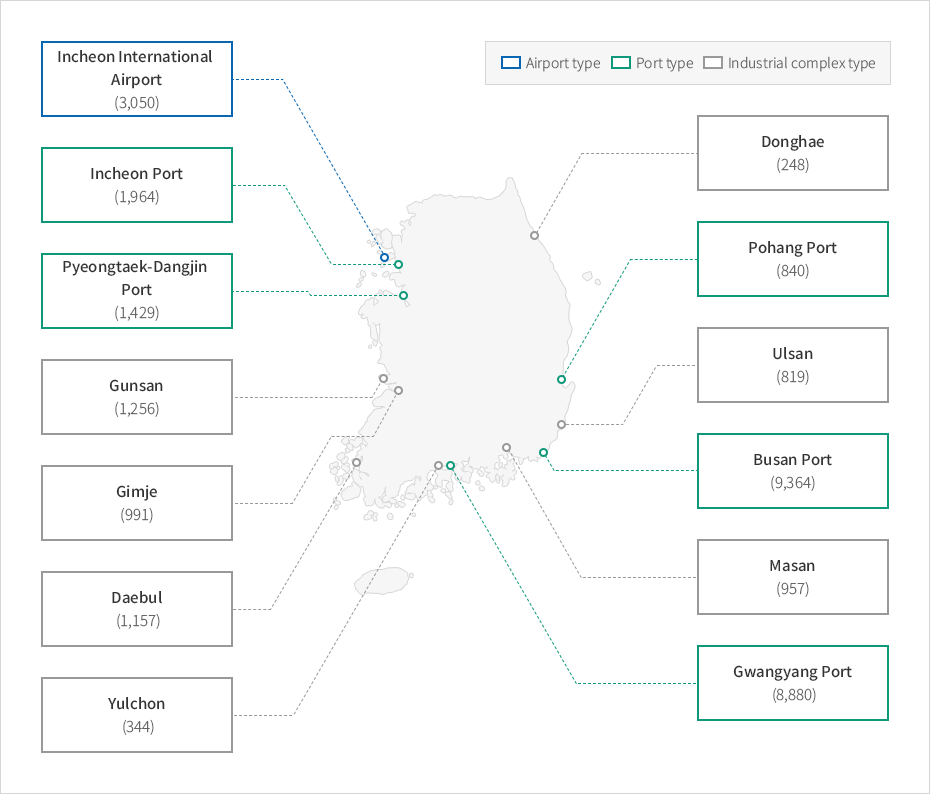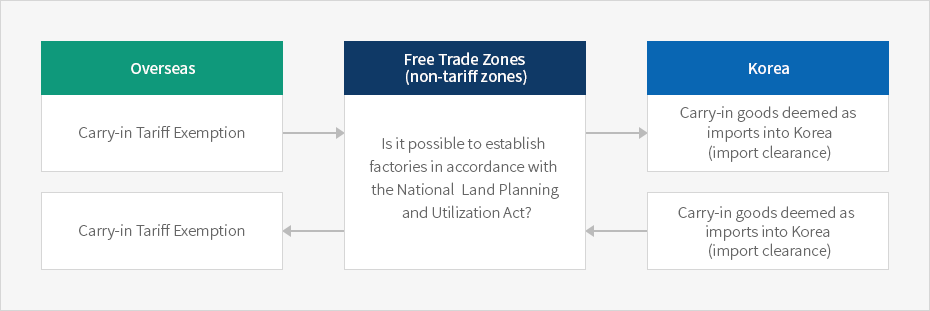Free Trade Zones
- Home
- Incentives
- Location Support
- Free Trade Zones
Requirements for Occupancy
- Manufacturing companies whose primary purpose is exporting (including Korean offshore companies in repatriation)
- Wholesale companies whose primary purposes are export and import transactions
- Knowledge-based service companies
- Foreign-invested companies engaged in manufacturing and knowledge-based services
- Logistics companies dealing in cargo handling, transport, storage, and exhibition
- Companies assisting occupying companies in finance, customs, and data processing, etc.
Incentives
| Category | Eligible Business | Incentives |
|---|---|---|
| Tax Reductions or Exemptions |
|
100% of local taxes (acquisition tax, registration tax) for up to 15 years |
| Tariff Benefits |
|
|
| Zero-Tax Rate of Value-Added Tax |
|
|
| Rental Fee Reductions or Exemptions |
|
|
Designation of Free Trade Zones
| Category | Masan | Gunsan | Daebul | East Coast | Yulchon | Ulsan | Gimje |
|---|---|---|---|---|---|---|---|
| Date of Designation | ’07.1.1. | ’00.10.6. | ’02.11.21. | ’05.12.12. | ’02.12.12. | ’08.12.8. | ’09.1.6. |
|
Area (1,000㎡) |
957 | 1,256 | 1,157 | 248 | 344 | 819 | 991 |
| Number of Companies | 113 | 28 | 34 | 17 | 14 | 35 | 25 |
| Occupancy Rate (%) | 98.1 | 89.9 | 96.5 | 58.7 | 62.7 | 96.2 | 46.3 |
| Category | Seaport-Type | Airport-Type | ||||
|---|---|---|---|---|---|---|
| Busan Port | Pohang Port | Pyeongtaek-Dangjin Port | Gwangyang Port | Incheon Port | Incheon International Airport | |
| Date of Designation | ‘02.1.1. | ’08.12.8. | ’09.3.30. | ‘02.1.1. | ‘03.1.1. |
‘05.4.6.(1stage) ‘07.12.31.(2stage) |
|
Area (1,000 m2) |
9,364 | 840 | 1,429 | 8,880 | 1,837 | 3,050 |
| Number of Companies | 67 | 3 | 15 | 47 | 1 | 664 |
Overview of Free Trade Zones
Free Trade Zones in Korea


-
Airport type
- Incheon International Airport(3,050)
-
Port type
- Incheon Port (1,964)
- Pyeongtaek-Dangjin Port(1,429)
- Pohang Port (840)
- Busan Port (9,364)
- Gwangyang Port (8,880)
-
Industrial complex type
- Gunsan (1,256)
- Gimje (991)
- Daebul (1,157)
- Yulchon (344)
- Donghae (248)
- Ulsan (819)
- Masan (957)












